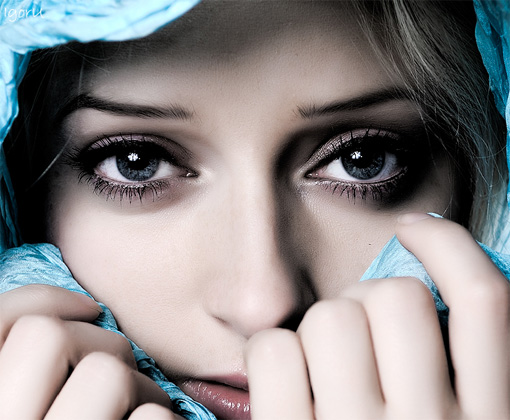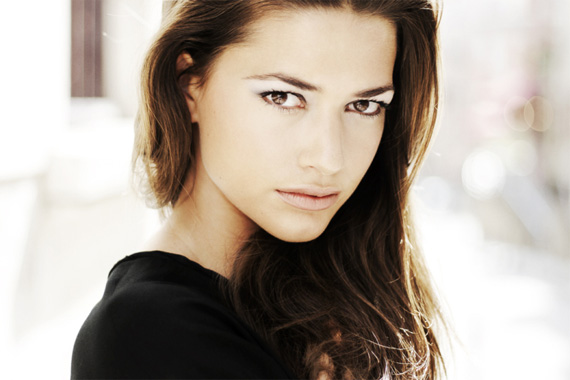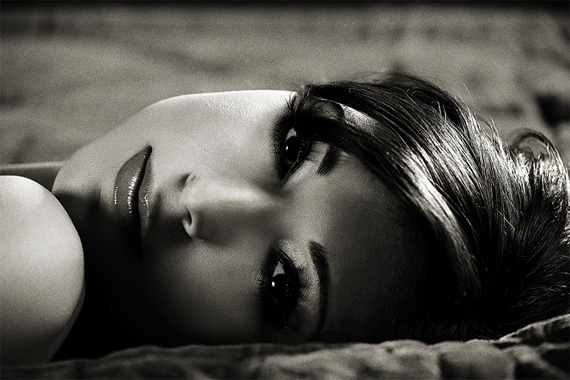Portraiture can be very rewarding. It’s a chance to show the best side (literally) of someone, and create a photo that communicates something unique.
The first rule of good portraiture is LOOK at your subject. This sounds obvious but take a browse through all the shots you have of your family and friends and see if they don’t have a sameness about them. Head and shoulders, passport photos, awkward poses, uncomfortable expressions, blank looks, embarrassed smiles…?

"Untitled Portrait" captured by Igor Umansky (Click Image to Find Photographer)
Each person has some unique quality that deserves photographing. It doesn’t have to be perfect skin, a remodeled nose, pouting mouth, stunning eyes. But it should be some quality that best communicates the person’s individuality.
Sound daunting? It isn’t if you follow some basic tips.
Don’t use direct flash. Flash is light at its most boring. On rare occasions it can really lift a shot into dazzling life, but most of the time using available light is better. Flash tends to give a bland look and the fact of the flash going off takes away any intimate atmosphere you may have created.
Use a telephoto lens. 105-135mm is best. Wide angle is a big no-no.
Pick the person’s ‘best side’. People really do have one. Get one shoulder turned towards the camera so one side is favored a little. Try the pose the other way and figure out which is best.

Photo captured by ToMa (Click Image to Find Photographer)
Dress your subject up if possible. If this is a semi-formal portrait you can have some say in the clothes. Solid, dark or light colors work best. Stripes checks, swirls, and patterns confuse the viewer’s eye. Bold colors can overwhelm the skin tones. A vee or scoop neck is better than a round neck. For a man or older woman, cover the shoulders, for a young woman leave them bare.
Try to use the available light to good effect. Position the person where the light is soft and coming mainly from one direction. This can give a moody feel and usually gets the eyes more attention.
You can use a reflector on the shadowed side to ‘bounce the light’ if the contrast between highlight and shadow is too strong. You can make a simple reflector using aluminum foil on a sheet of cardboard.
Let the person sit down. This helps them to relax and helps you to be able to direct them more easily.
Direct the person. In portraiture, you’re dealing with minor movements and shifts of position and angle. Try to shoot slightly above the person to make the eyes open more. Lower the shoulder closest to the camera, get the head straight or at an engaging angle. Lower the chin a little.
Some people look best when they smile and some don’t. You can get more interesting expressions and nuances without a smile. Tell the person to think of something they like doing. This will bring up subtle lights in the eyes and shifts in the mouth lines.
Compose vertically. Turn the camera on its side. A portrait usually includes the head and upper torso and sometimes the hands. These work best in a vertical format. Horizontal framing leaves you with wide open spaces either side of the subject that can detract from the feel of the shot.

"Blue Prelude" captured by Mel (Click Image to See More From Mel)
If the hands are in the shot, take a good look at them. Hands can look ugly or awkward. A lightly closed fist is usually neutral. Let the hands rest on a knee or in the lap and see what you have. Crop them out later if they don’t work.
If you’re shooting candid portraits the same tips apply but in these shots you have to move around to get the best angle.
About the Author Lance is not very good at writing about himself in the third person. He is an ex-patriot Australian living in Taiwan running a business consulting company. His grasp of the Chinese language ranges from poor to laughable and in most circumstances his actual use of the Chinese language results in laughter.
Complete Portrait Photography Tips
Like this article?
Receive free photography tips and in-depth articles to your inbox from PictureCorrect and stay up-to-date. Subscribe Now!


